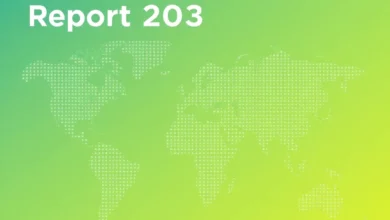Countering Inflation: How US P&C Insurers Can Build Resilience

Inflation has become one of the most pressing challenges for US property and casualty (P&C) insurers. The rapid rise in the cost of goods, services, and labor has sharply increased claims costs, squeezed profit margins, and forced insurers to rethink their strategies for pricing, underwriting, and operational efficiency. As inflation shows little sign of abating, the industry must adopt new approaches to build resilience and thrive in this volatile environment.
The Inflation Shock and Its Impact
The insurance industry was already facing profitability challenges before the pandemic, but the inflation spike since 2021 has added significant pressure. Rising prices have contributed to a dramatic increase in loss costs, with estimates showing an additional $30 billion in claims expenses in 2021 alone compared to historical trends. Personal lines, such as auto and homeowners insurance, have been particularly hard hit, with the cost of motor vehicle parts, equipment, and used cars soaring well above general inflation rates.
This inflationary surge has led to a marked deterioration in underwriting results, especially in personal lines, while commercial lines have managed to maintain some profitability. However, even in commercial insurance, the combined ratio—a key measure of underwriting performance—has shown signs of weakening, raising questions about the sustainability of recent rate increases.
Why Inflation Hits P&C Insurers Hard
Inflation affects P&C insurers in several ways. First, claims costs rise as the price of materials, labor, and services needed to repair or replace damaged property increases. Supply chain disruptions and global market upheavals have made these cost pressures even more acute. Second, operational expenses climb as wages and the cost of doing business rise. Third, inflation erodes the real value of investment portfolios, which are crucial to insurers’ profitability.
For insurers with long-tail liabilities—claims that take years to settle—the impact of inflation can be even more severe, as the ultimate cost of claims becomes harder to predict and reserve for. This uncertainty complicates both pricing and capital management, making it vital for insurers to improve their forecasting and risk modeling capabilities.
Strategies for Building Resilience
To weather the inflation storm, US P&C insurers are taking a series of coordinated actions across their value chains. Here are some of the most effective strategies:
1. Dynamic Pricing and Product Innovation
Insurers are adopting more assertive premium and pricing strategies. This involves building in favorable premium trends, improving the agility and responsiveness of pricing and filing processes, and enhancing products to reduce exposure to inflation-sensitive risks. Real-time data and analytics are being used to adjust rates more frequently and accurately, ensuring that premiums keep pace with rising costs.
favorable premium trends, improving the agility and responsiveness of pricing and filing processes, and enhancing products to reduce exposure to inflation-sensitive risks. Real-time data and analytics are being used to adjust rates more frequently and accurately, ensuring that premiums keep pace with rising costs.
2. Claims Productivity and Automation
Rising claims costs demand greater efficiency in claims management. Insurers are investing in automation and digital tools to speed up claims processing, reduce errors, and manage expenses. Improving managed-care network utilization and negotiating better pricing with service providers are also key levers. The goal is to balance faster cycle times with accuracy and cost control.
3. Operational Efficiency and Cost Management
Building resilience means becoming more cost-efficient across the organization. This includes streamlining operations, reducing unnecessary expenses, and leveraging technology to automate routine tasks. Insurers are also reviewing their supply chain relationships and vendor contracts to find savings and mitigate inflationary pressures.
4. Scenario Planning and Strategic Foresight
The most resilient insurers are those that integrate inflation and tariff-related scenarios into their enterprise risk and capital planning. By anticipating potential shocks and modeling their impact, insurers can make faster, more informed decisions. This strategic foresight extends to investment portfolios, where insurers must account for trade policy volatility, global supply exposures, and changing capital allocation needs.
5. Leadership and Organizational Alignment
A coordinated response to inflation requires strong leadership and cross-functional collaboration. Senior executives, including the chief product officer, chief claims officer, and CFO, must work together to develop a “resilience playbook.” This playbook outlines the tactics to deploy as conditions change, sets measurable thresholds for action, and ensures that the organization is aligned and ready to respond.
6. Customer-Centric Solutions
Some insurers are tailoring products for inflation-sensitive customers by adding features like flexible premiums, adjusted coverage triggers, or built-in cost protections. Others are targeting growth in emerging domestic markets, such as those tied to onshoring, manufacturing investment, and supply chain reconfiguration.
A New Mindset for a New Normal
The current inflationary environment is not a temporary shock but may represent a new normal for the industry. Traditional planning based on past trends is no longer sufficient. Insurers must adopt a more agile, forward-looking mindset, continuously reassessing their strategies as new data and market signals emerge.
By embracing innovation, investing in technology, and building organizational resilience, US P&C insurers can not only withstand inflationary pressures but also position themselves for long-term success. The winners will be those who sense and seize opportunities amid uncertainty, turning today’s challenges into tomorrow’s competitive advantages.




